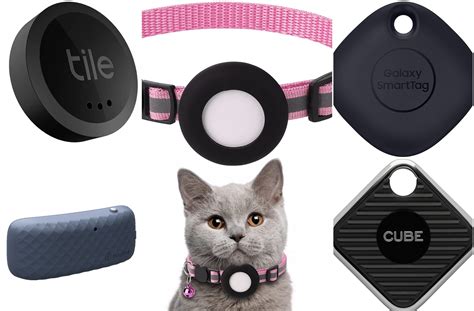Introduction
Losing a beloved pet can be a devastating experience. Pet tracking devices offer peace of mind by providing real-time location data, allowing you to find your furry friend in case they wander off. With advancements in technology, these devices have become increasingly sophisticated, offering a wide range of features to meet the needs of pet owners.

2023 vs. 2025: Key Differences in Pet Tracking Devices
1. Tracking Technology:
- 2023: Most pet trackers rely on GPS or cellular networks for location data. GPS provides accurate outdoor tracking, while cellular networks offer indoor coverage but may be less precise.
- 2025: Advancements in radio frequency identification (RFID) and Bluetooth low energy (BLE) will enable more precise indoor tracking and longer battery life.
2. Activity Monitoring:
- 2023: Some trackers include basic activity monitoring features, such as step counting and calorie tracking.
- 2025: Expect more comprehensive activity tracking, including sleep patterns, heart rate monitoring, and calorie expenditure calculations.
3. Virtual Fencing:
- 2023: Virtual fencing allows you to set up a designated safe zone around your home, and receive alerts if your pet leaves the area.
- 2025: Advanced virtual fencing will incorporate AI-powered motion detection, providing more accurate and customizable boundary monitoring.
4. Two-Way Communication:
- 2023: A few trackers offer basic two-way communication, allowing you to hear your pet’s barking or send a recorded message remotely.
- 2025: Enhanced two-way communication will enable voice calls and video streaming, fostering a stronger connection between you and your pet.
Key Benefits of Pet Tracking Devices
1. Peace of Mind:
Tracking devices provide peace of mind, knowing that you can locate your pet in case of an emergency or if they wander off.
2. Reduced Stress and Anxiety:
Knowing that your pet is safe and trackable can significantly reduce stress and anxiety both for you and your pet.
3. Enhanced Safety:
Trackers help ensure your pet’s safety by alerting you to potential dangers, such as leaving designated safe zones or entering hazardous areas.
Market Overview and Projections
- The global pet tracking device market was valued at $3.64 billion in 2023 and is projected to grow to $8.01 billion by 2025, exhibiting a CAGR of 18.1%.
- The increasing adoption of smart homes and IoT devices is driving demand for pet tracking devices.
- Major players in the market include Garmin, Whistle, Tractive, and SpotOn.
Use Cases and Applications
Pet tracking devices have various practical applications, including:
- Lost Pet Recovery: Locating lost pets quickly and efficiently.
- Activity Monitoring: Tracking pet activity levels for health and fitness purposes.
- Virtual Fencing: Keeping pets within designated safe zones and preventing escape.
- Monitoring Special Needs Pets: Tracking pets with medical conditions or behavioral issues.
- Pet Boarding Tracking: Providing peace of mind to pet owners during boarding stays.
Future Innovations and Applications
The future of pet tracking devices holds exciting possibilities, including:
- AI-Powered Behavioral Analysis: Analyzing pet behavior patterns to identify potential health concerns or training needs.
- Augmented Reality (AR) Tracking: Using AR glasses or apps to visualize your pet’s location and surroundings.
- Drone-Assisted Search and Rescue: Integrating pet trackers with drones to aid in lost pet recovery operations.
- Health Monitoring Wearables: Tracking vital signs, such as body temperature and heart rate, for early disease detection and management.
FAQs on Pet Tracking Devices
1. How much do pet tracking devices cost?
- Prices vary depending on features and subscription plans. Expect to pay between $100-$300 for the device itself, with an additional monthly subscription fee ranging from $5-$20.
2. How long do pet tracking device batteries last?
- Battery life depends on the type of tracker, but most devices last between 7-30 days.
3. Can pet tracking devices work without a cellular connection?
- Some trackers offer offline tracking using GPS, but real-time data and alerts require a cellular connection.
4. Are pet tracking devices safe for my pet?
- Yes, pet tracking devices are generally considered safe for pets. They emit low levels of radiation and are designed to be comfortable to wear.
Case Studies: Real-Life Applications
1. Lost Pet Recovery:
- In 2022, a pet owner in New York City lost her dog in Central Park. She was able to use her pet’s tracker to locate and reunite with her beloved companion within an hour.
2. Activity Monitoring:
- A dog owner in San Francisco used a pet tracker to monitor his dog’s activity levels. He noticed a decrease in activity and consulted with a veterinarian, who diagnosed the dog with an underlying health condition.
3. Virtual Fencing:
- A cat owner in Los Angeles set up a virtual fence around her backyard. When her cat attempted to leave the designated safe zone, she received an alert and was able to bring her cat back inside.
Conclusion
Pet tracking devices have become an indispensable tool for pet owners, offering peace of mind, safety, and convenience. With advancements in technology, these devices continue to evolve, offering a wide range of features to meet the needs of pet owners in 2025 and beyond. By investing in a pet tracking device, you can ensure your furry friend’s safety and well-being, giving you the peace of mind you deserve.





















